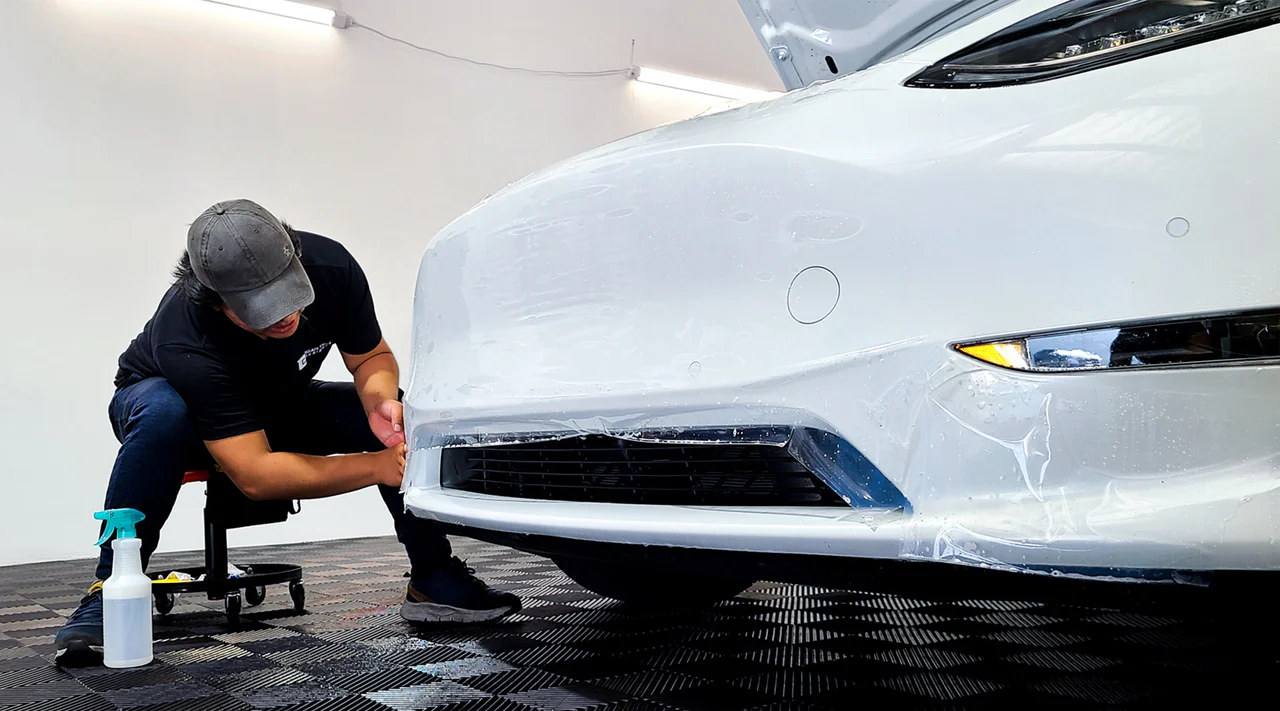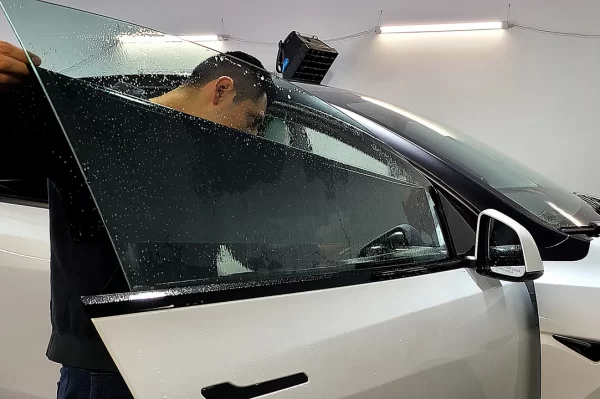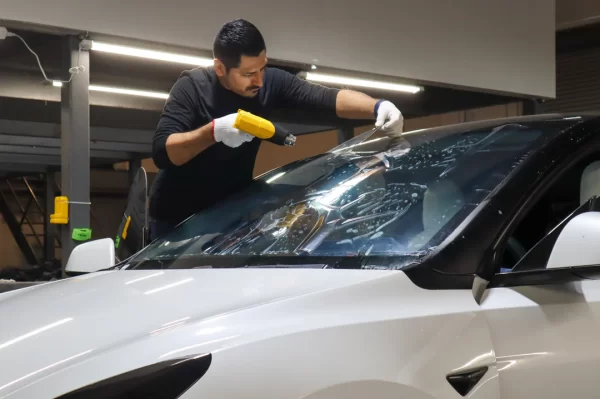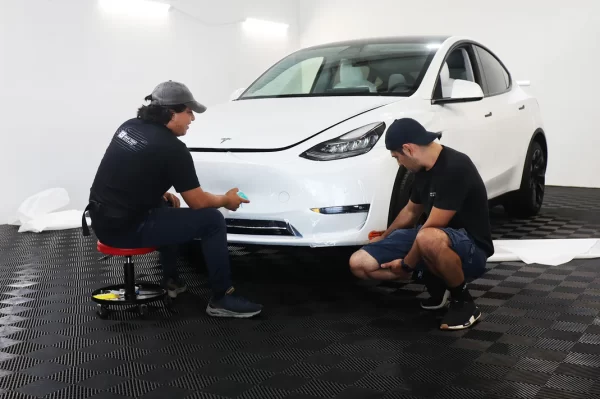
Paint Protection Film (PPF) is a clear urethane film that is applied to the painted surfaces of a vehicle in order to protect them from chips, scratches, and other types of damage. PPF is also commonly known as clear bra, clear paint protection, and clear adhesive film.
Invented in the late 1960s by 3M engineer Richard Drew, paint protection film was originally used on military aircraft to protect against debris and corrosion. In the 1980s, PPF began appearing on race cars and luxury vehicles as an aftermarket product. And today, PPF is one of the most popular ways to protect the paint job on a car, truck, or SUV.
How Does Paint Protection Film Work?
Paint protection film works by absorbing the impact of rocks, bugs, and other road debris that would otherwise chip or scratch the paint. The clear urethane film is applied directly to the painted surface of the vehicle and acts as a sacrificial layer—meaning that it will take the brunt of the damage so that your paint doesn’t have to.
When PPF is properly installed, it is virtually invisible and will not alter the appearance of your vehicle. In fact, many luxury car dealerships and manufacturers now offer PPF as an option at the time of purchase. And because it’s nearly impossible to tell that a vehicle has PPF once it’s been installed, many people choose to apply it to their entire vehicle for maximum protection.
When choosing a type of PPF for your vehicle, it’s important to consider both your budget and your needs. If you live in an area with lots of road debris or you frequently take your car off-roading, you’ll want to opt for a more durable option like carbon fiber film. But if you’re just looking for basic protection against everyday wear and tear, standard film should suffice.
Alternatives to Paint Protection Film
Paint protection film is not the only way to protect your vehicle’s paint job. There are several alternatives that can also provide some level of protection, though none are as effective as PPF.
One alternative is car wax or sealant. Waxes and sealants form a barrier on top of your paint that helps repel water and dirt—two elements that can cause damage over time—but they will not protect against impacts from rocks or road debris. Another alternative is ceramic coating, which bonds with your paint to create a hard protective layer but can be expensive and time-consuming to apply properly.
Partial coverage PPF or Full Coverage of PPF?
One decision you’ll need to make when choosing paint protection film is whether you want partial or full coverage. Partial coverage means that only certain areas of the vehicle will be protected (usually the front bumper, hood, and fenders). Full coverage means that the entire vehicle will be wrapped in PPF. Obviously, full coverage offers more protection but it also comes at a higher price tag.
Different Types of Installation Options For Paint Protection Film
There are two main types of PPF install options: Bulk and Pre-cut. Bulk PPF is sold by the foot and is cut to size on site, while pre-cut PPF comes in precut kits that are specific to make and model. Pre-cut PPF is generally more expensive than bulk PPF, but it is also easier to install and results in fewer wrinkles.
Bulk PPF is best suited for those who are experienced with installation, as it requires the use of a template in order to get a perfect fit. Pre-cut PPF is less forgiving when it comes to errors, but the end result is usually worth the extra effort.
Finally, there are two main finishes for PPF: matte and glossy. Matte finish films have a low sheen that helps hide imperfections, while glossy films have a high shine that makes the paint look wet. Each finish has its own advantages and disadvantages, so it really comes down to personal preference which one you choose.
Conclusion:
Paint protection film is an important investment for any car owner who wants to keep their vehicle looking like new for years to come. There are many different types of PPF available on the market, so be sure to do your research before making a purchase. We hope this blog post has helped you understand the different types of PPF available and how they can benefit your car!




